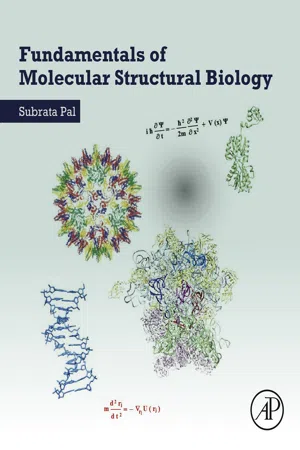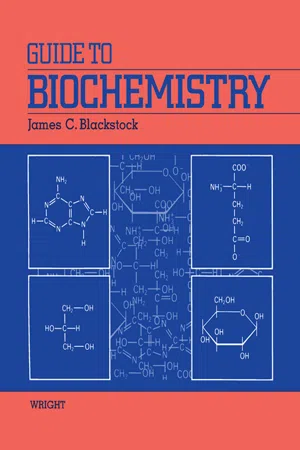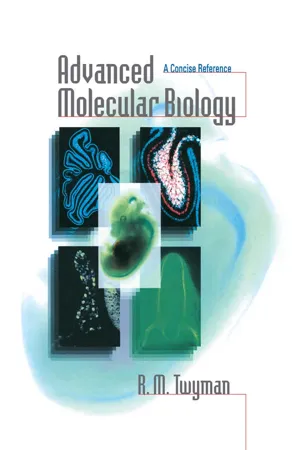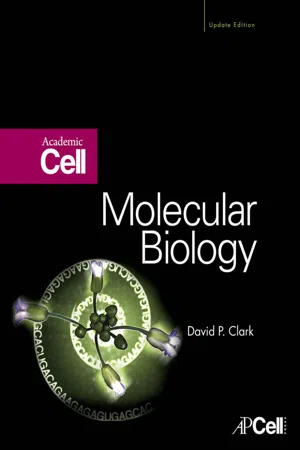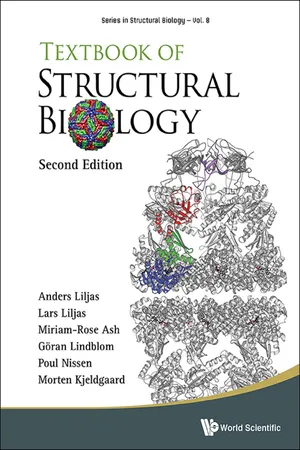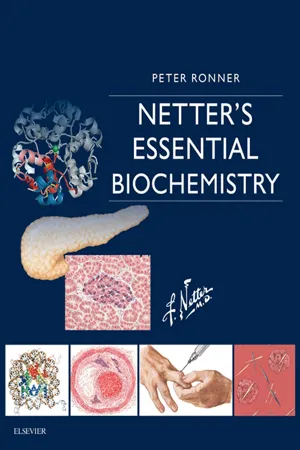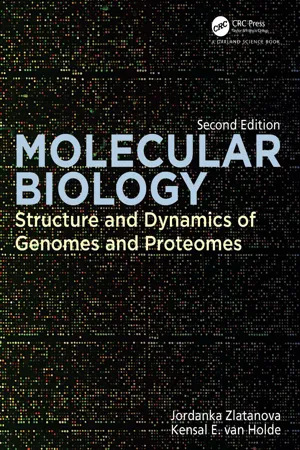Biological Sciences
Translation
Translation is the process by which a cell's machinery converts the genetic information encoded in mRNA into a sequence of amino acids, forming a protein. This process occurs in the ribosomes and involves the reading of the mRNA codons by transfer RNA molecules, which carry the corresponding amino acids. The resulting protein is essential for the structure and function of the cell.
Written by Perlego with AI-assistance
Related key terms
12 Key excerpts on "Translation"
- eBook - ePub
- Anders Liljas, Måns Ehrenberg(Authors)
- 2013(Publication Date)
- WSPC(Publisher)
11The Process —TranslationTranslation is the process by which the inherited genomic information is translated into functional proteins — a process that is essential for all cells and organisms. A genome may contain from less than 1000 to more than 30,000 translated genes, depending on the organism. In most genomes, the hereditary material is in the form of DNA, but in certain viruses, it is RNA instead. The process of Translation is usually preceded by a transcription, and the actual product of Translation, a protein, is frequently transported from where it was synthesized into some other compartment of the cell.The process of Translation occurs on the ribosome in the cytoplasm or in the cellular organelles, mitochondria and chloroplasts. Protein synthesis in bacteria is the most-explored system, and the process is the focus of this chapter.11.1 THE DYNAMICS OF Translation AND THE RIBOSOMETranslation involves numerous RNA and protein molecules that bind to and dissociate from the ribosome. In addition to these highly dynamic interactions, the ribosome itself is a dynamic enzyme. Its two subunits can move with regard to each other. The 30S subunit has been observed to rotate by about 6° with regard to the 50S subunit after peptidyl transfer (Table 8.4; Frank & Agrawal, 2000; Agirrezabala et al. 2008; Noeske & Cate, 2012).The subunits themselves are also dynamic. The small subunit is built from four structural units, domains, that move in relation to each other. The large subunit may be less flexible, since its six rRNA domains are thoroughly woven together. However, the two stalks on each side of the large subunit, which are related to the entry and exit of tRNA and factor proteins, are both highly flexible. Thus, the ribosome is a dynamic multicomponent enzyme that can respond to the binding of different ligands by entering different functional states (Spirin, 1969). In particular, the translocation step needs movements of the mRNA by one codon and the tRNAs from the A- to the P- and from the P- to the E-site (Plate 8.1; Yusupov et al. - eBook - ePub
- Subrata Pal(Author)
- 2019(Publication Date)
- Academic Press(Publisher)
Chapter 11Translation
Abstract
Translation is a process in which genetic information carried in messenger RNA (mRNA), in the form of ribonucleotide triplets or codons, is transferred to protein as a linear sequence of amino acids (polypeptide). Transfer RNA (tRNA) provides the physical interface between the amino acid to be incorporated into a growing polypeptide chain and the mRNA. For this purpose, the amino acid is linked to its cognate tRNA by aminoacyl-tRNA synthetase. A Translation machinery, assembled in a huge ribonucleoprotein complex called the ribosome, begins Translation at the start codon (initiation), proceeds one codon at a time along a string of nonoverlapping codons (elongation), and terminates at the stop codon (termination). Initiation is certainly the most intricate stage in Translation. In each elongation step, an amino acid is added to a growing polypeptide chain by the formation of a peptide bond. At termination, the nascent polypeptide chain is released from the ribosomal complex. The entire process of Translation is dependent on numerous factors, both RNA and protein.Keyword
Codon; mRNA; tRNA; rRNA; Amino acid; Aminoacyl-tRNA synthetase; Initiation; Elongation; TerminationOnce genetic information, carried in DNA in the form of a linear sequence of four deoxyribonucleotide bases (A, T, G, C), has been transferred to messenger RNA (mRNA) as a linear sequence of four ribonucleotide bases (A, U, G, C), the task of the cell is to “forward” the message to another macromolecule, protein, in the form of a linear sequence of 20 amino acids. Therefore, we shall discuss, in this chapter, a process in which the 4-letter language of RNA is “translated” into the 20-letter language of protein. This process is called Translation. - eBook - ePub
- Kobus Marais, Kobus Marais(Authors)
- 2022(Publication Date)
- Bloomsbury Academic(Publisher)
The turning point in the development of biology was the discovery of the structure of DNA (Watson and Crick 1953) and the subsequent uncovering of the molecular foundations of heredity (Jacob 1973). These discoveries showed that genes are parts of DNA molecules that encode the sequence of amino acids in all proteins in living cells. Molecular biologists routinely use the language metaphor to explain molecular processes in cells. The synthesis of the mRNA molecule, as a reverse-complementary copy of the genomic DNA sequence of a gene, is called transcription, whereas the protein synthesis on a ribosome, guided by the sequence of nucleotides in the mRNA, is called Translation. These became technical terms in molecular biology, and were later incorporated in more complex derivative terms. For example, proteins that facilitate or regulate transcription are called transcription factors, and proteins involved in Translation are called Translation factors.In contrast to human communication, which is mostly interactive, the information transfer in cells is typically unidirectional: from DNA sequence to mRNA sequence and then from mRNA to the order of amino acids in the protein. This concept was first proposed by Francis Crick (1958), who emphasized the fundamental irreversibility of protein synthesis (he called it ‘the central dogma’, because of the deficiency of direct evidence). Crick wrote:In more detail, the transfer of information from nucleic acid to nucleic acid, or from nucleic acid to protein may be possible, but transfer from protein to protein, or from protein to nucleic acid is impossible. Information means here the precise determination of sequence, either of bases in the nucleic acid or of amino acid residues in the protein.(1958: 153)Later, it was discovered that some viruses can copy the RNA sequence to DNA using enzyme ‘reverse transcriptase’ – this shows that the central dogma is not universal. However, there are no examples of natural processes that convert a protein sequence to an original nucleotide sequence.The details of information transfer from a gene to the protein, known as gene expression, are as follows. The first step is transcription, which is copying of a DNA sequence into the newly synthesized RNA sequence performed by the RNA polymerase enzyme. Both DNA and RNA are nucleic acids, which are long polymers of nucleotides linked via sugar (desoxyribose or ribose, respectively) and a phosphate. DNA is a double-stranded spiral (helix), where two polymers have matching pairs of nucleotides: A, T, G and C in one strand match to T, A, C and G, respectively, in the other strand. In contrast, RNA is a single-strand polymer synthesized in a template-matching way on one of the DNA strands. In the nucleus of a cell, the RNA polymerase, assisted with one or multiple transcription factors, binds to the starting end of a gene, called promoter. This action is followed by the separation of two DNA strands, and RNA polymerase moves along one of the DNA strands and adds nucleotides to the RNA that match to the DNA nucleotides using the same rule of pairing as in the DNA helix. The only difference is that, instead of the T nucleotide, the RNA uses a similar substitute, U. From the semiotic point of view, biological transcription is a subtype of Translation, which is literal and automated, but not deterministic, because it is regulated by a large number of internal and external signals. Transcription of a gene sequence is a goal-directed semiotic process (in contrast to unintended making footprints on a sandy beach), because it presumably emerged as a result of adaptive evolution from other primordial metabolic functions (e.g. RNA-templated RNA synthesis), and it is performed by the RNA polymerase enzyme, an agent that evolved to perform this specific function guided by imprinted goal directedness. - eBook - ePub
- James C. Blackstock(Author)
- 2014(Publication Date)
- Butterworth-Heinemann(Publisher)
CHAPTER 17Gene expression
Publisher Summary
This chapter presents the concept of gene expression. The concept of the central dogma of molecular biology, formulated in the late 1950s by Francis Crick may be summarized as DNA (deoxyribonucleic acid) →RNA (ribonucleic acid) →protein. Transcription is the process in which RNA is synthesized by enzymes called DNA-directed RNA polymerases. These enzymes use ribonucleoside triphosphates as substrates and DNA as a template. Specific base sequences signal the termination of transcription. Transcription produces RNA molecules. Translation involves two compartments: the cytosol in which individual amino acids are enzymically attached to their specific tRNAs by amino-acid-tRNA ligases and the ribosomes in which the amino acids are correctly positioned according to the base sequence of a mRNA template and polymerized into polypeptide chains. As there are four major bases in mRNA, 43 different codons are possible. The 64 triplets constitute the genetic code. The genetic code applies to prokaryotes and eukaryotic nuclear and chloroplast mRNAs but not to mitochondrial mRNAs. Therefore, the genetic code is quasi-universal.17.1 The central dogma
The concept of the central dogma of molecular biology (Section 1.6 ), formulated in the late 1950s by Francis Crick may be summarized as DNA (deoxyribonucleic acid) → RNA (ribonucleic acid) → protein.In all living organisms, nuclear DNA serves as the reservoir of genetic information which is expressed in terms of the structure of proteins manufactured by the cell. The base sequence of the DNA determines the amino acid sequence of proteins which are responsible for all aspects of cellular function. Because of cellular organization, synthesis of protein from the DNA blueprint occurs in two stages: transcription, i.e. the synthesis of a messenger RNA molecule of a structure complementary to the structure of DNA so that the genetic information is transferred to mRNA, and upon delivery of the message to the cytosol, its Translation into protein. - eBook - ePub
Advanced Molecular Biology
A Concise Reference
- Richard Twyman(Author)
- 2018(Publication Date)
- Garland Science(Publisher)
Chapter 23Protein Synthesis
Fundamental concepts and definitions- Protein synthesis is the level of gene expression where genetic information carried as a messenger RNA (mRNA) molecule is translated into a polypeptide.
- The components of the protein synthesis machinery are mRNA, the template which contains the code to be translated, ribosomes, large ribonucleoprotein particles which are the sites of protein synthesis, transfer RNA (tRNA), versatile adaptor molecules which carry amino acids to the ribosome and facilitate the process of Translation, and accessory factors associating transiently with the ribosome, required for ribosome assembly and disassembly, and its activity during elongation.
- Like other polymerization reactions, protein synthesis has stages of initiation, elongation and termination, each of which may be regulated. The protein synthesis mechanism is similar in prokaryotes and eukaryotes, but there are subtle differences in the nature of the components and their order of assembly. There are major differences, however, concerning the context in which protein synthesis occurs. In bacteria, transcription and protein synthesis occur simultaneously in the cytoplasm (allowing cross-regulation between different levels of gene expression) and mRNA may be polycistronic. In eukaryotes, transcription is confined to the nucleus and the mRNA is exported to the cytoplasm for Translation. Nascent mRNA is extensively processed before export and is usually monocistronic (see RNA Processing).
- Following synthesis, a polypeptide undergoes further processing before becoming active. It must fold correctly, a process sometimes requiring the assistance of a molecular chaperone (q.v.). It may be cleaved, and specific residues may be chemically modified or conjugated to small molecules. Such modifications are often associated with the targeting of proteins to specific compartments in the cell or for secretion. Proteins may need to associate noncovalently with other proteins or with nonpolypeptide cofactors for their full activity. For a discussion of these processes, see
- eBook - ePub
- David P. Clark(Author)
- 2009(Publication Date)
- Academic Cell(Publisher)
3 for a brief overview). The genetic information is transmitted in two stages. First the information in the DNA is transcribed into messenger RNA (mRNA). The next step uses the information carried by the mRNA to give the sequence of amino acids making up a polypeptide chain. This involves converting the nucleic acid “language,” the genetic code, to protein “language,” and is therefore known as Translation. This overall flow of information in biological cells from DNA to RNA to protein is known as the central dogma of molecular biology (see Chapter 3, Fig. 3.17) and was first formulated by Sir Francis Crick. Ribosomes use the information carried by messenger RNA to make proteins. The decoding of mRNA is carried out by a submicroscopic machine called a ribosome, which binds the mRNA and translates it. The ribosome moves along the mRNA reading the message and synthesizing a new polypeptide chain. Bacterial protein synthesis will be discussed first. The process is similar in higher organisms, but some of the details differ and will be considered later. Proteins Are Gene Products An early rule of molecular biology was Beadle and Tatum’s dictum: “one gene—one enzyme” (see Ch. 1). This rule was later broadened to include other proteins in addition to enzymes. Proteins are therefore often referred to as “gene products.” However, it must be remembered that some RNA molecules (such as tRNA, rRNA, small nuclear RNA) are never translated into protein and are therefore also gene products. Gene products include proteins as well as non-coding RNA Furthermore, instances are now known where one gene may encode multiple proteins (Fig. 8.01). Two relatively widespread cases of this are known—alternative splicing and polyproteins. In eukaryotic cells, the coding sequences of genes are often interrupted by non-coding regions, the introns. These introns are removed by splicing at the level of messenger RNA - eBook - ePub
- Anders Liljas, Lars Liljas;Miriam-Rose Ash;G?ran Lindblom;Poul Nissen;Morten Kjeldgaard(Authors)
- 2016(Publication Date)
- WSPC(Publisher)
11Protein Synthesis â Translation
11.1Evolution of the Translation System
The Translation of genetic information into functional protein molecules is a central process for life; and the genetic code, tRNA molecules and the machinery for protein synthesis are all highly conserved. The ribosome on which Translation occurs is composed of protein and rRNA molecules. Carl Woese showed that sequenced fragments of ribosomal rRNA molecules from a large variety of species were related. Thus, the ribosomal RNAs could be used to analyze the relationship between species. By 1977, he could show that it was not correct to divide the present living organisms into prokaryotes and eukaryotes. A unique new kingdom had to be introduced: archaea. Living organisms, according to Woese, had to be organized into bacteria, archaea and eukaryotes.In comparisons of completely sequenced genomes, the molecules of the Translation apparatus stand out as dominating the group of universally conserved molecules. The genetic code, tRNAs, ribosomal rRNA, ribosomal proteins and Translation factors must have coevolved at a very early phase of biological evolution and have subsequently gone through only limited further changes.An important aspect of protein synthesis is that nucleic acid molecules have central roles, in contrast to most other processes in cells where proteins dominate. Central components are the mRNA, the tRNA and the ribosomal rRNA molecules. An mRNA molecule contains a copy of the gene sequence and binds to the ribosome. The tRNA molecules, the adapters suggested by Francis Crick, decode the gene sequence and link the amino acid into the growing peptide on the ribosome.Fig. 11.1 ▪ - Naoki Sugimoto(Author)
- 2021(Publication Date)
- Wiley-VCH(Publisher)
7 TranslationThe main points of the learning- Study basic molecular mechanisms of Translation reaction.
- Understand presence of various reaction steps for Translation modulation and maintenance.
- Study contributions of RNA structures to the Translation modulation.
7.1 Introduction
Protein is biopolymer consisting of amino acids polymerized in one dimension. In living system, the amino acid sequence of each protein is encoded in the sequence of messenger RNA (mRNA) that is originally encoded in DNA sequence. The sequence code on mRNA is decoded by a ribosome though a reaction termed Translation. Since the protein is the main functional molecule in extant living system, Translation is one of the most important biological reactions. Intracellular protein expression is modulated at not only transcription level but also at Translation level. The formation of unique RNA structures and their dynamic behaviors are the key factors to modulate and maintain the Translation system. This chapter describes contribution of RNA structures on Translation reaction as well as its basic knowledge. The contributions of structure dynamics of RNAs on gene expressions including replication, transcription, and Translation are described in Chapter 10 .7.2 RNAs Involved in Translation Machinery
There are three categories of RNAs such as mRNA, tRNA, and rRNA, which are directly involved in Translation machinery. mRNA is a template for the Translation. A region of nucleotide sequence in mature mRNA that is translated to a given protein is known as an open reading frame (ORF) (Figure 7.1 ). Correlation between nucleotide sequence and amino acid sequence was first proposed by Francis Crick as a sequence hypothesis. George Gamow, who is a theoretical physicist and cosmologist famous for his big bang theory, proposed that specific trinucleotide encodes one specific amino acid. The trinucleotide, which encodes a specific amino acid, is now known as a codon. Correlations between each codon and amino acid, which are conserved in all extant living system with few exceptions, have resolved by contributions from Marshall Nirenberg and Har Khorana (Figure 7.2 ). Outside of coding sequence, mRNA contains noncoding sequences. Untranslated regions (UTRs) at 5′ and 3′ ends of mRNA are called 5′ UTR and 3′ UTR, respectively. Prokaryotic mRNAs are polycistronic, which contains multiple ORFs in one mRNA. There are noncoding sequences between adjacent ORFs. In the case of eukaryotic mRNAs, primary transcript is a precursor messenger RNA (pre-mRNA) consisting of alternating exon and intron regions. Noncoding introns are excluded by posttranscriptional splicing that result in connected exons as a mature mRNA (Figure 7.1- Tina M. Henkin, Joseph E. Peters(Authors)
- 2020(Publication Date)
- ASM Press(Publisher)
central dogma of molecular biology, which states that information stored in DNA is copied into RNA and then translated into protein. We now know of many exceptions to the central dogma. For example, information can sometimes flow in the reverse direction, from RNA to DNA. The information in RNA also can be changed after it has been copied from the DNA. Moreover, the information in DNA may be expressed differently depending on where it is in the genome. Despite these exceptions, however, the basic principles of the central dogma remain sound.This chapter outlines the process of gene expression and protein synthesis, with a brief discussion of how proteins can be differentially localized after synthesis. The discussion is meant to be only a broad overview, with special emphasis on topics essential to an understanding of the chapters that follow and on subjects unique to bacteria. For more detailed treatments, consult any modern biochemistry textbook.Overview
DNA carries the information for the synthesis of RNA and proteins in regions called genes . The first step in expressing a gene is to transcribe an RNA copy from one strand in that region. The word “transcription” is descriptive, because the information in RNA is copied from DNA in the same language, which is written in a sequence of nucleotides. If the gene carries information for a protein, this RNA transcript is called messenger RNA (mRNA) . An mRNA is a messenger because it carries the information encoded in a gene to a ribosome , which is the main machinery for protein synthesis. Once on the ribosome, the information in the mRNA can be translated into the protein. Translation is another descriptive word, because one language—a sequence of nucleotides in DNA and RNA—is translated into a different language—a sequence of amino acids in a protein. The mRNA is translated as it moves through the ribosome, 3 nucleotides at a time. Each 3-nucleotide sequence, called a codon , carries information for a specific amino acid. The assignment of each of the possible codons to an amino acid is called the genetic code- eBook - ePub
Netter's Essential Biochemistry E-Book
Netter's Essential Biochemistry E-Book
- Peter Ronner(Author)
- 2016(Publication Date)
- Elsevier(Publisher)
Chapter 7Translation and PostTranslational Protein Processing
Learning ObjectivesFor mastery of this topic, you should be able to do the following:▪ Describe the factors that determine the start, continuation, and end of Translation.▪ Explain why some DNA mutations in the coding sequence do not result in a mutant protein.▪ Explain why a one-base or two-base insertion or deletion is usually a loss-of-function mutation and why no mutant protein accumulates in the tissue.▪ List factors that set the gross rate of protein synthesis.▪ List antibiotics that interfere with protein synthesis and describe their mechanism of action.▪ Describe the synthesis of membrane proteins.▪ Describe the factors that influence sorting of newly synthesized proteins and their transport to different subcellular compartments.▪ Describe common postTranslational modifications.▪ Discuss how cells control the quality of newly synthesized proteins and degrade these proteins if needed.Synopsis
▪ As detailed in Chapter 6 , the nucleotide sequence of DNA gives rise to an mRNA of essentially complementary sequence.▪ In Translation, ribosomes synthesize proteins according to the rules of the genetic code and the genetic information contained in mRNA. The mRNA sequence is read in units of three nucleotides, called codons. Each codon specifies either a particular amino acid or a signal to terminate the synthesis of the protein.▪ Aminoacyl-tRNA synthetases charge each tRNA with an appropriate amino acid, thus generating aminoacyl-tRNAs.▪ Ribosomes scan mRNA for a start codon to initiate protein synthesis. At each codon, the translating ribosome matches the codon sequence with a specific aminoacyl-tRNA and catalyzes peptide bond formation.▪ - eBook - ePub
Molecular Biology
Structure and Dynamics of Genomes and Proteomes
- Jordanka Zlatanova(Author)
- 2023(Publication Date)
- Garland Science(Publisher)
We focus on bacterial Translation, which is better understood and less complex than Translation in eukaryotes. Much of this understanding stems from the abundant information gathered in recent years by a powerful combination of methods, including X-ray crystallography, cryo-EM, bulk kinetic studies, single-pair FRET, and computational modeling. Together, these studies have provided the first, clear, mechanistic picture of the process. 16.2 An overview of Translation: How fast and how accurate? To meet cellular needs, a process such as Translation must be both fast enough to maintain the product at necessary levels, especially in cases when the proteins turn over quickly, and accurate enough to deliver a usable product. It might seem intuitive that speed and accuracy are competitive, but an overall view of the transfer of information in the cell does not support such a conclusion. For example, DNA replication proceeds at ~1,000 nucleotides (nt) per second, and even on first pass maintains an error frequency, r, of only 1 in 100,000: r = 1 × 10 –5. With proofreading, the error frequency drops to 1 × 10 –10 (see Chapter 19). Translation is much slower: in bacteria, around 15 amino acid residues are added to a nascent polypeptide chain per second; in eukaryotes, the rate is probably about half this or less. Nevertheless, the error frequency, even with proofreading, is ~1 × 10 –4. Understanding the velocity of Translation in bacteria is complicated by the fact that it is coupled to transcription: typically, bacteria transcribe ~45 nt of mRNA per second; this is equivalent to ~15 codons per second. Thus, the mRNA elongation rate matches the rate of Translation. So we do not know whether the rate of Translation evolved to match that of transcription, or vice versa, in these organisms - eBook - ePub
- Pascal Leclair(Author)
- 2023(Publication Date)
- CRC Press(Publisher)
8 Protein Synthesis Part II The Mechanism of Protein TranslationDOI: 10.1201/9781003379058-8In 1957, Francis Crick gave what would become a most significant lecture on protein synthesis at University College London during a Society for Experimental Biology symposium on the “Biological Replication of Macromolecules”. In the hour-long lecture, which is now referred to as the “Central Dogma” lecture and about which is said to have permanently altered the logic of biology,1 Crick summarized the development in protein research with an emphasis on the mechanism of protein synthesis and makes clear that proteins’ role in cells is at least of equal footing as that of DNA:It is an essential feature of my argument that in biology proteins are uniquely important. They are not to be classed with polysaccharides, for example, which by comparison play a very minor role. Their nearest rivals are the nucleic acids. Watson said to me, a few years ago, ‘The most significant thing about the nucleic acids is that we don’t know what they do.’ By contrast the most significant thing about proteins is that they can do almost anything. In animals proteins are used for structural purposes, but this is not their main role, and indeed in plants this job is usually done by polysaccharides. The main function of proteins is to act as enzymes. Almost all chemical reactions in living systems are catalysed by enzymes, and all known enzymes are proteins. It is at first sight paradoxical that it is probably easier for an organism to produce a new protein than to produce a new small molecule, since to produce a new small molecule one or more new proteins will be required in any case to catalyse the reactions.
Index pages curate the most relevant extracts from our library of academic textbooks. They’ve been created using an in-house natural language model (NLM), each adding context and meaning to key research topics.

